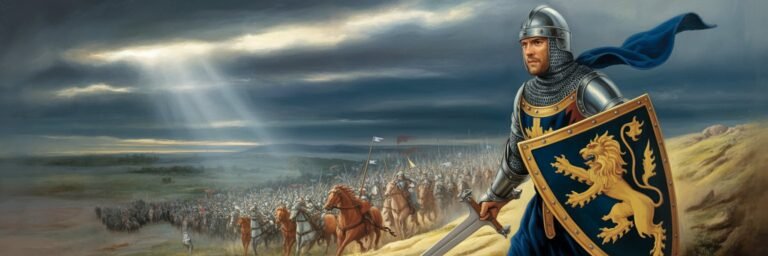INTRODUCTION
Step into the annals of human history, where the artifacts of time are eclipsed only by tales whispered on lips across the ages. On this dangerous and thrilling field, we embark on an exploration into the annals of war and its legacy on some of history’s most intriguing conspiracies. Not just tales of victors and vanquished, but also of whispers behind the curtain, of mysteries and controversies that defy simple explanations. Understanding the legacy of war in historical conspiracies requires a rigorous journey through a plethora of places, players, and periods; a kind of time-travel.
HISTORICAL BACKGROUND
The saga commences in ancient Greece in the 4th century BC—a time when wars were waged not merely with swords, spears, and fire, but with an arsenal of conspiracy and intrigue. Brutus, Cassius, and their co-conspirators plunged their blades into the very heart of Julius Caesar introducing a new element into the warfare landscape. The Ides of March conspiracy was born from Rome’s interior conflict, a fraying Republic under pressures of war, highlighting the first potent connection between conspiracy and war.
Fast forward to the powder-keg of Europe in the early 20th century. As we remember the guns of August 1914 signaling the first World War’s dawn, we also recall the secret alliance between the Serb nationalist Gavrilo Princip’s organization, the Black Hand, and elements within the Serbian military—an alliance that led directly to the assassination of Archduke Franz Ferdinand of Austria, a catalyst for international conflict.
These historical tableaus, among many others, have shown that conspiracies, far from being the fantasies of the paranoid, are historically grounded phenomena that have shaped and been shaped by the tides of war.
THEORIES AND INTERPRETATIONS
Academic theories on the interconnectedness of war and conspiracy are as fascinating as they are varied. According to political scientist Michael Barkun, it is the inherently secretive nature of war that breeds conspiracies. War involves clandestine operations, misinformation, and disinformation, cultivating a fertile ground for conspiracy theories to flourish.
Anthropologist James C Scott in his work, “Weapons of the Weak,” also suggests that conspiracy theories may arise from the cognitive need of individuals and societies to understand and make sense of the chaotic and often nonsensical realities of war. Whether it’s the World War II-era rumors about President Franklin D Roosevelt knowing in advance about the attacks on Pearl Harbor or the theories suggesting the CIA’s involvement in President Kennedy’s assassination during the height of the Cold War—are all examples that support these theories.
MYSTERIES AND CONTROVERSIES
Peering into the shadows of history, we find numerous controversies and mysteries. For instance, was Operation Northwoods, a proposed false-flag operation against the Cuban government that originated within the U.S. Department of Defense (DoD) and the Joint Chiefs of Staff (JCS) of the United States government in 1962, connected to the wider Cold War motivations?
Did the phantom weapons of mass destruction used to justify the invasion of Iraq in 2003 mask an even grander plot tied to oil control? Do the 38 classified pages withheld from the official report on the 9/11 attacks hint at a darker narrative swept away by the war on terror?
SYMBOLISM AND CULTURAL SIGNIFICANCE
The amalgam of war and conspiracies is not confined to actual historical events. Their symbolic potency has also permeated into our culture—littered across literature, films, and even festivities. From George Orwell’s “1984” or the Shakespearean portrayal of Brutus and Cassius conspiring against Caesar to the “Manchurian Candidate” or scores of conspiracy laden movies, the symbolic echoes of war conspiracies reverberate across the spectrum of human creativity.
MODERN INVESTIGATIONS
Modern investigations into the conspiracy and wartime connection have sought to untangle truth from speculation, using technological advances and meticulous archival research. Historians, journalists, and independent researchers continue to probe the murky depths of the Vietnam War, the JFK assassination, and the 9/11 attacks among many others. WikiLeaks, the controversial brainchild of Julian Assange, has also played a role in unveiling the hidden side of war in the 21st century.
LEGACY AND CONCLUSION
The legacy of war in historical conspiracies is a long, complex, and still unfolding one. The mixture of fact, speculation, fear, and intrigue offers a fertile ground for research. From Caesar’s death to the Coffee Mill gun of the Civil War, from the sinking of the Lusitania to the Gulf of Tonkin incident—the intertwining of war and conspiracy is indisputable.
In conclusion, the legacy of war in historical conspiracies is not a fringe element but a vital strand in the narrative of human history. From lofty kings to common soldiers, from enclosed palaces to secretive spy agencies—the shadow of conspiracy lurks. Understanding this legacy is crucial, not only to comprehend the past but also to navigate the challenges of the international stage today. As we step deeper into the 21st century, we find ourselves grappling with an increasingly volatile world, where the DNA of war and conspiracy continues to evolve—the microchip replacing the dagger, the tweet replacing the secret letter. Today, as ever, we walk a labyrinth, a maze of war, power, and secrecy, ever seeking the truth in history’s echoing corridors.






